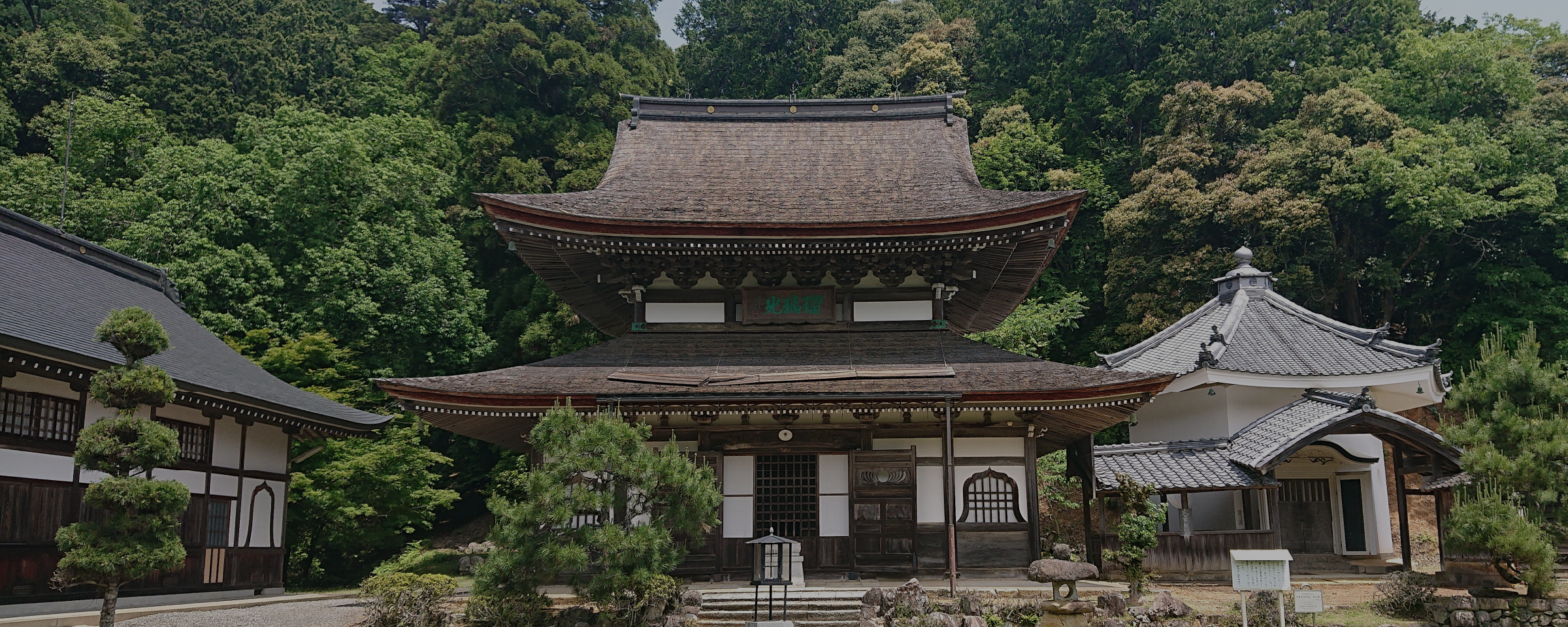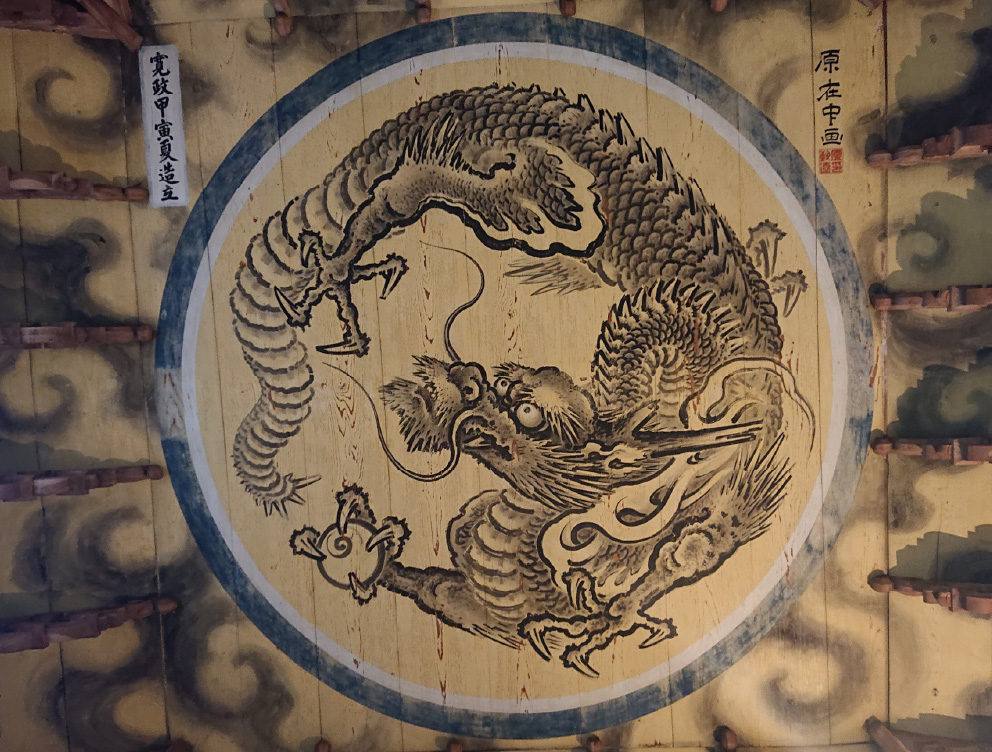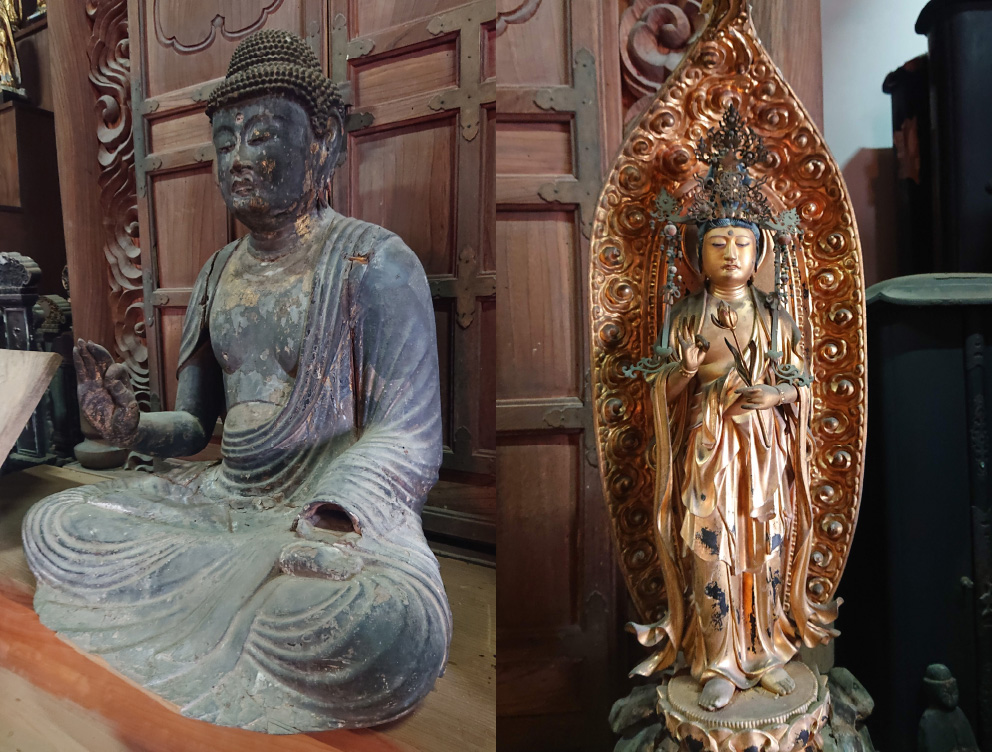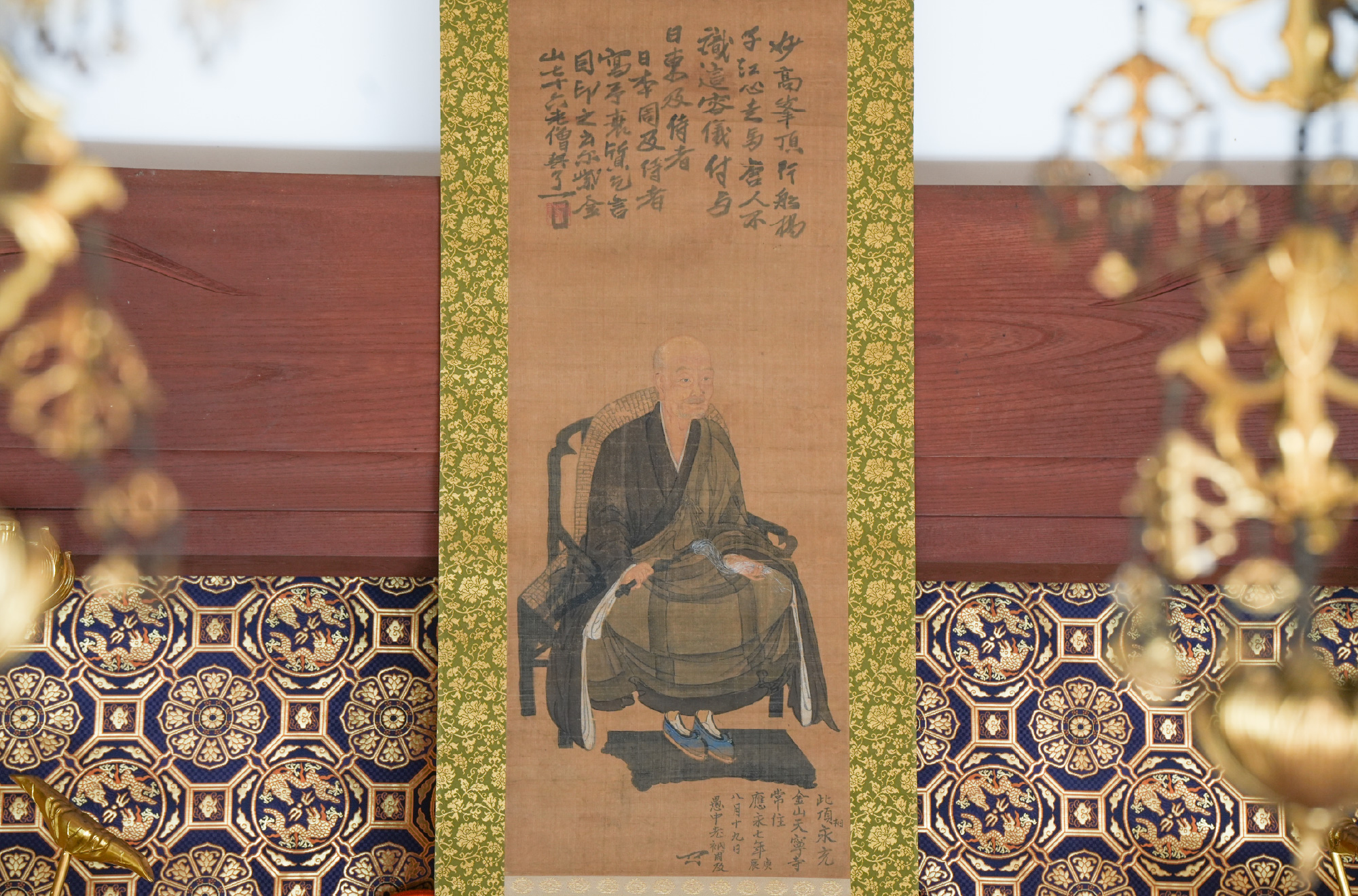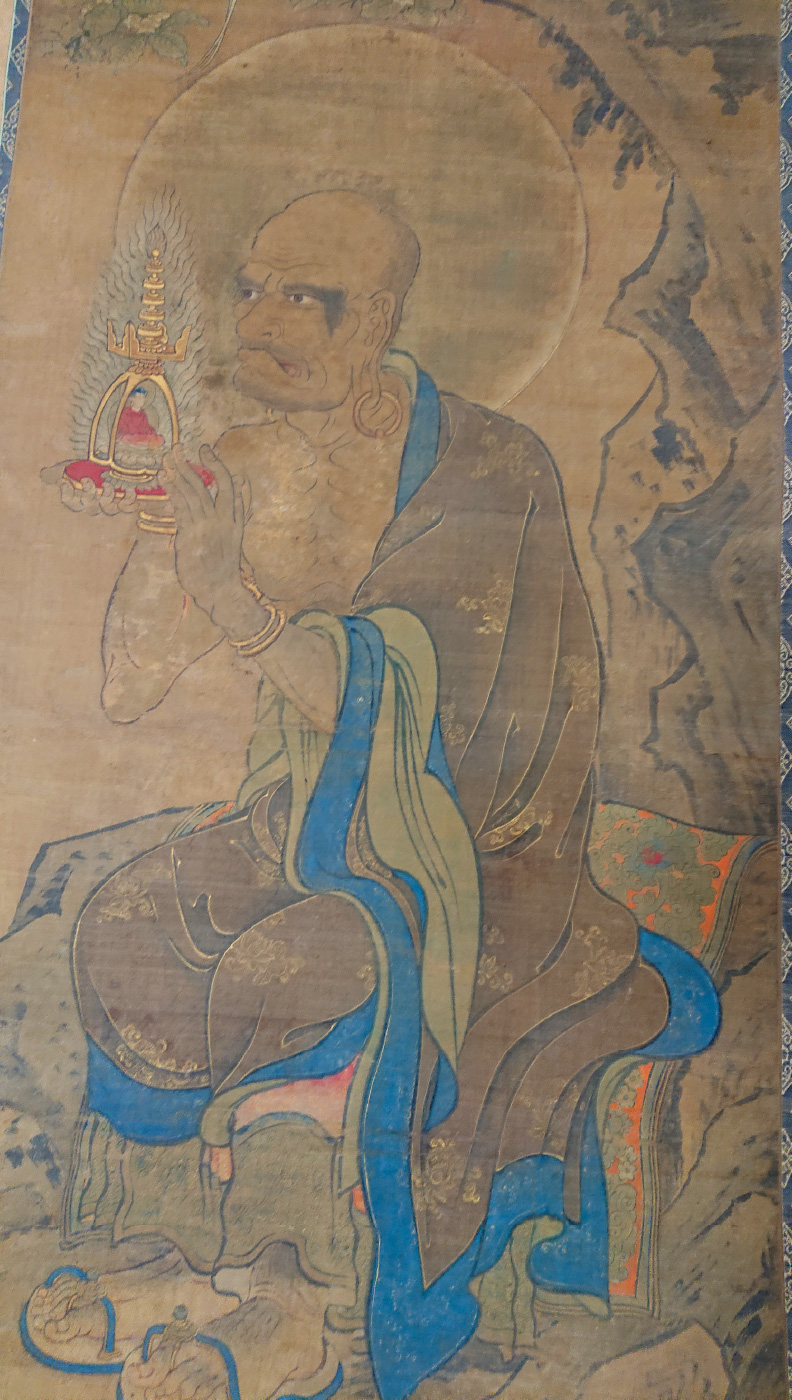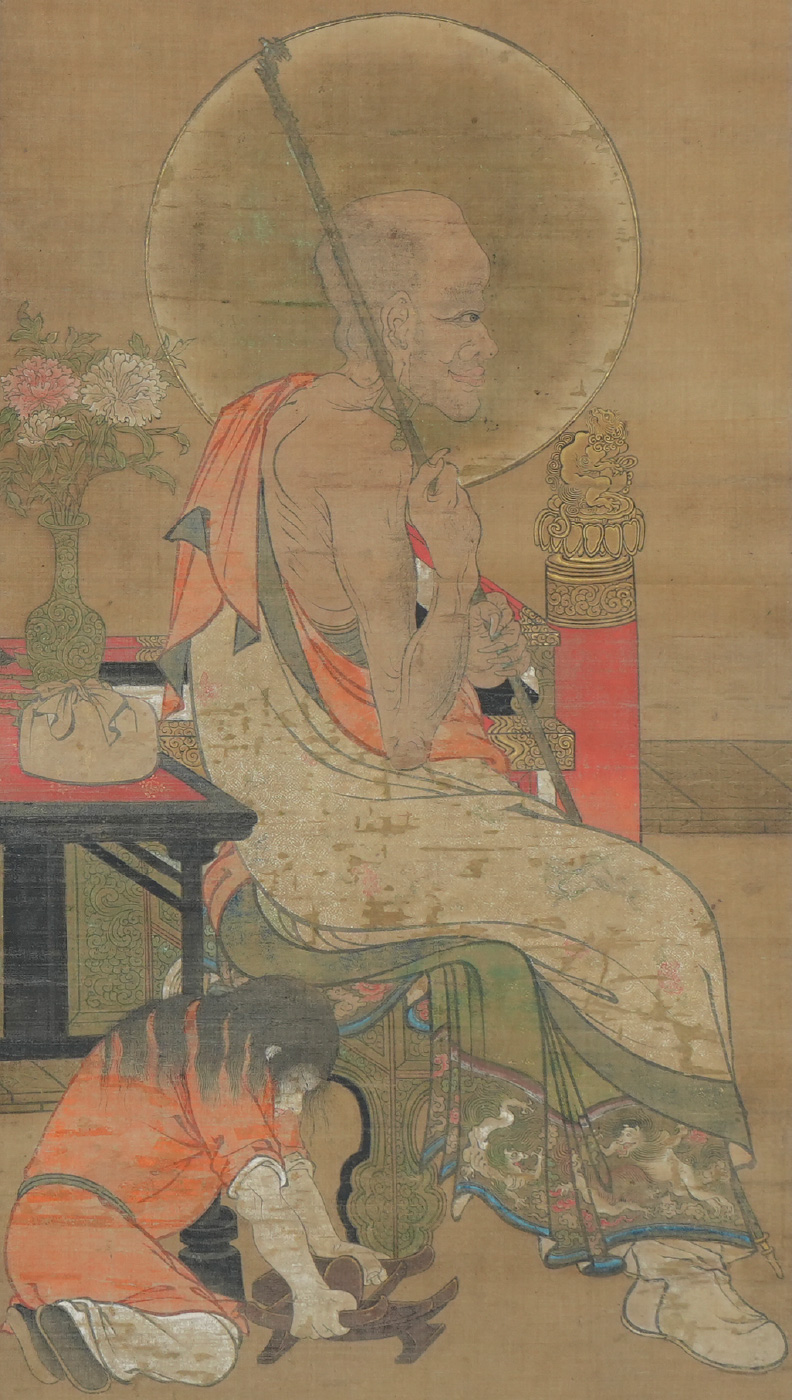Tenneiji Temple
Tenneiji Temple belongs to the Myoshin-ji school of the Rinzai sect, one of the three main sects of Zen Buddhism in Japan. Specifically, it once flourished alongside Buttsu-ji Temple in Aki Province (modern-day Hiroshima Prefecture) as one of the leading temples of the Guchu school, one of the twenty-four schools of Zen Buddhism. This school is named after its founder, Guchu Shukyu. He began training as a Buddhist monk from a young age in Mino Province (part of modern-day Gifu Prefecture), relocated to Kyoto at the age of 13 to study under Zen monk Muso Soseki, then left Japan at the age of 19 to study at Jinshan Temple in Zhenjiang, China under the monk Jixiu Qiliao.
Guchu founded Tenneiji in 1365 after returning to Japan. In addition to two nationally designated Important Cultural Properties—a self-portrait of Jixiu Qiliao on silk and a set of 16 depictions of disciples of the Buddha on silk—the temple grounds host a number of buildings dating back to the Edo Period (1603–1868), although many were destroyed and rebuilt after fires in 1777 and 1961.
Two buildings, however, survived the second fire and thus retain their 18th-century architecture: The Yakushi-do (Yakushi Hall), dedicated to the Buddha of healing and medicine Bhaisajyaguru (Yakushi Nyorai in Japanese), which has a ceiling painting of a dragon and clouds by artist Hara Zaichu, and the Kaisando (Temple Founding Hall), which is designed in a hexagonal shape with plaster walls and enshrines images of Guchu and Jixiu.
Important Cultural PropertySelf-Portrait of Jixiu Qiliao on Silk
This color self-portrait on silk of Chinese Buddhist monk Jixiu Qiliao, known as Shikkyu Keiryo in Japan, was created in 1344. It measures 89 centimeters high by 34 centimeters wide (approx. 35 × 13 inches).
In contrast to Jixiu's garb, which is depicted in a simple manner, the facial features are drawn with great care and attention to detail. The portrait was presented to Zen master Guchu Shukyu upon his return to Japan from China in recognition of having inherited the teachings of his master. The characters at the bottom-right were written in 1400 by Guchu, who founded Tenneiji Temple. They state his wish for the portrait to be passed down at Tenneiji in perpetuity.
Jixiu was the mentor of Guchu, and once stated, "Nobody from China understands my teachings. The only person who does is Guchu, who came from Japan."
Important Cultural PropertySixteen Disciples of the Buddha on Silk
These sixteen images on silk depict the sixteen disciples of the Buddha who remained in this world following the latter's death in order to teach the Buddhist ways. They are believed to have been painted in the early part of the Muromachi Period (1336–1573).
Artist Li Longmian depicts the disciples in a calm and peaceful manner while also conveying a sense of realism and flamboyance. He uses fine lines to express the rather eccentric faces in detail while employing bold, thick lines for the clothing to create dynamism.
Each measures 119 centimeters high by 56 centimeters wide (approx. 47 × 22 inches). They are the oldest extant arhat paintings in Fukuchiyama City, and preservation of the complete 16-work set makes them particularly valuable to scholars of art and Buddhist culture. One account states that the pieces were once kept in nearby Izaki Castle (no longer extant), but during an attack on the fortress in the 16th century, the paintings were smuggled out and brought to Tenneiji, preventing their untimely loss.
-

No. 1 Kannon-ji Temple
(Fukuchiyama City) -

No. 2 Tenneiji Temple
(Fukuchiyama City) -

No.3 Ankokuji Temple
(Ayabe City) -

No. 4 Komyoji Temple
(Ayabe City) -

No. 5 Shoreki-ji Temple
(Ayabe City) -

No. 6 Matsunoo-dera Temple
(Maizuru City) -

No. 7 Kongoin Temple
(Maizuru City) -

No. 8 Taneji Temple
(Maizuru City) -

No. 9 Chionji Temple
(Amanohashidate) -

No. 10 Enjoji Temple
(Kyotango City)

